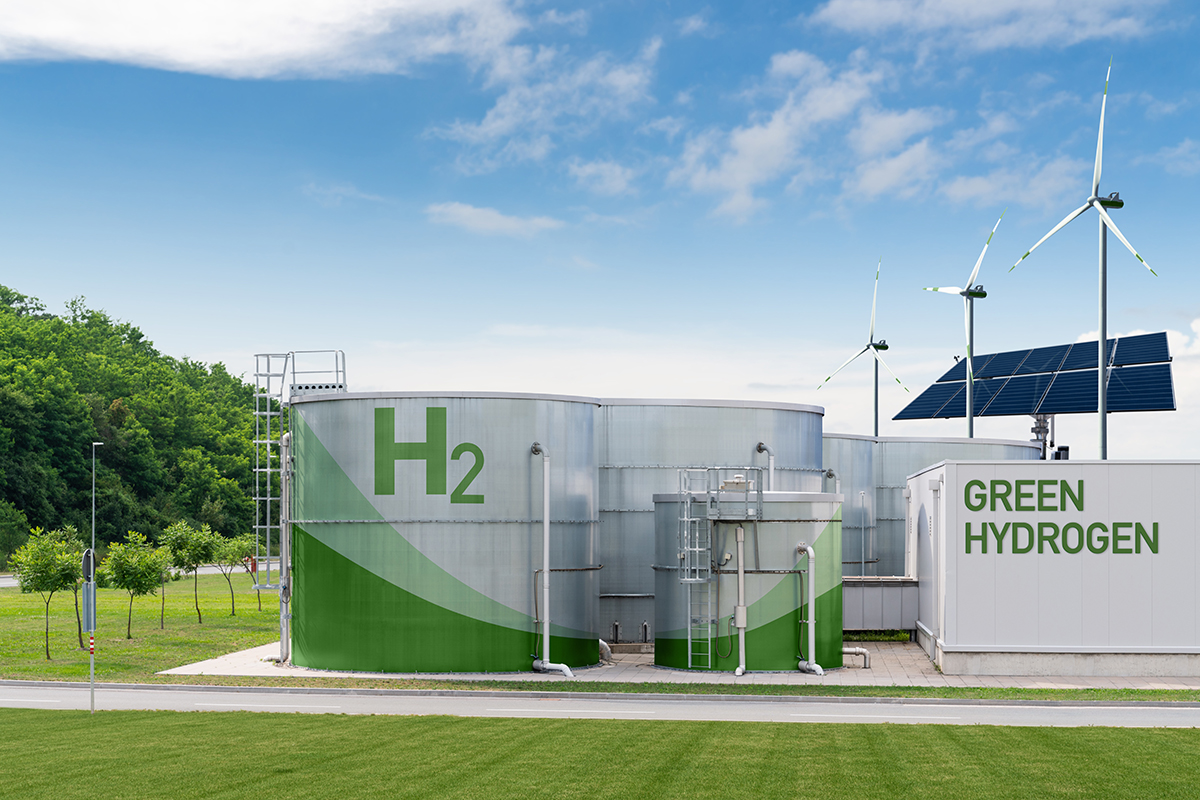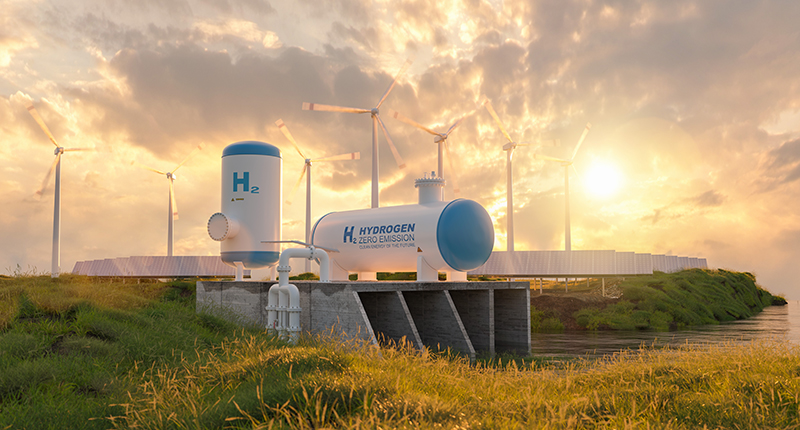Emerging Renewable Technologies – Green Hydrogen

Published: Monday, 12 February 2024
Looking forward to the future of renewable energy, we are constantly looking for innovative technologies that will aid in the progress of renewable technology. In this blog post, we will investigate green hydrogen, a recent renewable energy that is still in the research stage of development.
What is Green Hydrogen?
Green hydrogen is produced through the electrolysis of water with renewable energy. This hydrogen is produced with much lower greenhouse gas emissions than ordinary hydrogen derived from fossil fuels. The goal of green hydrogen is to reduce our overall reliance on fossil fuels while also mitigating the effects of global warming to roughly 1.5°C.
Uses of Green Hydrogen
Green hydrogen is expected to play a significant role in decarbonising energy systems. Green hydrogen will be an effective solution for energy systems that rely largely on fossil fuels. It has the potential to have an impact on heavy industry, energy storage, fuel, and domestic consumption. Some of these uses are:
Heavy Industry
Hydrogen is widely employed in the chemical, petrochemical, and metallurgical industries. These businesses emit enormous volumes of carbon dioxide, but by switching to green hydrogen, they may produce emissions-free produce.
Energy Storage
Its vast capacity and lengthy life lifetime make it suitable for use as an energy storage system. The storage device would be an excellent reserve, and renewable hydrogen could be used to supplement the electrical supply.
Fuel
Another application of green hydrogen would be to decarbonise transportation, particularly long-distance and air travel. Most of the fuel we currently use for various modes of travel is inexpensive but polluted; with green hydrogen, we will be able to considerably reduce emissions in the sector, assisting us in reducing our carbon footprint in long-distance and air transport.
Domestic Use
In terms of household use, some clean and renewable energies may struggle to achieve the desired temperatures in your home. Green hydrogen can reach far higher temperatures than other renewable technologies, making it ideal for electrical and heating applications in your house. Currently, residential use is regarded as the most promising application of green hydrogen.
Projects
Countries around the world have launched programmes and conducted research to determine the greatest use for green hydrogen. With a green future in sight, we must first recognise the limitations of energy so that we can use it more effectively later.
Since 2021, the UK has been experimenting with green hydrogen and offshore wind in Scotland to power converted oil and gas rigs into a 'green hydrogen hub' that will assist fuel local distilleries.
Plans have also been developed to enhance UK hydrogen production and include green hydrogen into the grid.

Benefits
As we transition to green energy, green hydrogen is set to be an up-and-coming new type of fuel to help us eliminate emissions. With this energy comes a variety of inherent benefits that we will be able to effectively use in the future. These are:
Clean and Renewable Energy
Green hydrogen is a clean energy, and the only waste that comes from it is water. This allows for a healthy renewable system as some renewable energies although they are clean, can still provide some form of negative waste.
As the article suggests, green hydrogen is a renewable energy. No natural resources will have to be exhausted meaning we won’t run out, unlike fossil fuels. With a renewable type of fuel, this will be great for the long-distance and air travel sector as the fuel will be able to meet the demand of the industry.
Storable
With green hydrogen being a gas it is very easily storable and is also able to be compressed and stored in ad hoc tanks for a long time. For companies this allows them to invest in fuel for the long term without the risk of the fuel expiring.
Transportable
With the element being light as is, the compressed hydrogen tanks allow for easier handling and transportation of the fuel. In comparison, it is much easier to transport green hydrogen than it is to transport lithium batteries, due to how light they are.
Drawbacks
Like all forms of energy supplies, come potential drawbacks, and issues that could affect overall how we want to use these products in the future. These are:
Research Stage
Green hydrogen is still in the research stage of production and until we can better understand the full potential of green hydrogen, then it will not be implemented into our renewable energy systems. However, the steps governments and companies have made shows promise for the future of green hydrogen and we can look forward to what it may bring in the future.
Cost
In comparison to other ways of producing hydrogen, green hydrogen is one of the most expensive ways to do it, especially in comparison to grey hydrogen (created from natural gas, however it will not capture the greenhouse gases made in the process therefore, being somewhat harmful.) As with all renewable energies the initial price is quite high however, as renewable energies become more mainstream, prices have become more competitive and cheaper than it was decades prior.
Renewable technologies are ever growing and in recent times we have seen more systems be used in our current energy systems. Green hydrogen is set to be a renewable energy for the future and has the potential in the long haul and air transport industry to find alternative solutions to fossil fuels and electric vehicles.
To learn more about renewable energies, check out our series of articles here.

